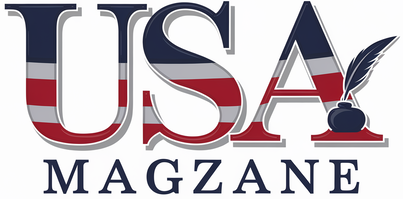For employees, pay stubs are more than just proof of income—they are a vital financial document that provides a detailed breakdown of earnings, deductions, and contributions. One of the key elements increasingly reflected on pay stubs is retirement plan contributions. Understanding how these contributions appear on your pay stub can help you monitor your savings, plan for retirement, and ensure that your employer is accurately managing your benefits.
In this article, we will explore how pay stubs reflect retirement plan contributions and why it matters for both employees and employers.
What Are Retirement Plan Contributions?
Retirement plan contributions are amounts of money that employees set aside from their paychecks to save for retirement. These contributions may be voluntary, employer-matched, or required, depending on the type of retirement plan. Common types of retirement plans in the United States include:
- 401(k) Plans: Employee-funded, tax-deferred accounts with optional employer matching contributions.
- 403(b) Plans: Retirement plans for employees of public schools and certain nonprofit organizations.
- Roth 401(k) Plans: Contributions are made with after-tax dollars, but qualified withdrawals are tax-free.
- Pension Plans: Employer-funded plans providing guaranteed retirement benefits based on salary and tenure.
- IRAs (Individual Retirement Accounts): Contributions made independently by employees outside employer-sponsored plans.
Tracking these contributions on your pay stub helps you understand how much is going toward retirement, how it impacts your taxable income, and whether your employer contributions are accurately recorded.
How Retirement Contributions Appear on a Pay Stub?
Pay stubs are designed to provide a comprehensive breakdown of your gross income, deductions, and net pay. Retirement plan contributions typically appear in the “deductions” section. Here’s how you can identify them:
Employee Contributions
These are the amounts deducted from your paycheck that you personally choose to contribute to your retirement plan. They may be listed as “401(k) Contribution,” “Retirement Savings,” or a similar line item. Pay stubs may show the contribution as a dollar amount and/or a percentage of your gross pay.
Employer Contributions
Many employers offer matching contributions as part of your retirement benefits. While employer contributions might not always reduce your current net pay, some pay stubs display these amounts to show the total value of your retirement savings.
Year-to-Date (YTD) Contributions
Pay stubs typically provide a year-to-date total for retirement contributions. This helps employees track their progress toward annual contribution limits set by the IRS and ensures that both employee and employer contributions are accurately recorded over time.
Pre-Tax vs. Post-Tax Contributions
Retirement contributions may be pre-tax or post-tax depending on the plan type. Pre-tax contributions (common in 401(k) plans) reduce taxable income, which can lower your income tax liability. Post-tax contributions, such as Roth 401(k) contributions, do not reduce your current taxable income, but qualified withdrawals in retirement are tax-free. Pay stubs often differentiate between these types with clear labels.
Why Tracking Retirement Contributions on Pay Stubs Matters?
Monitoring your retirement contributions through your pay stub is important for several reasons:
1. Ensures Accuracy of Deductions
Errors can occur in payroll processing, including incorrect deduction amounts or misallocated contributions. Regularly reviewing your pay stub allows you to verify that your chosen contribution percentage is accurately deducted and recorded.
2. Helps Maximize Employer Matching
Many employers match a portion of your contributions. Understanding how much you have contributed and how much the employer has matched ensures you don’t miss out on free retirement money.
3. Supports Tax Planning
Pre-tax contributions reduce taxable income, lowering the amount of federal and state taxes withheld from your paycheck. Tracking these deductions on your pay stub helps you plan your annual tax strategy and avoid surprises during tax season.
4. Tracks Retirement Savings Growth
Pay stubs often include year-to-date totals for retirement contributions, giving employees a clear picture of how much they are saving over time. This visibility helps employees make informed decisions about adjusting contribution rates to meet retirement goals.
5. Aids Financial Planning and Budgeting
By including retirement contributions on pay stubs, employees can see the real impact of these deductions on net pay. This insight is useful for managing monthly budgets and ensuring that enough income remains for living expenses while maintaining long-term savings.
Common Features on Pay Stubs for Retirement Contributions
Different employers may format pay stubs differently, but most include the following elements related to retirement plans:
- Contribution Type: Identifies whether the deduction is for a 401(k), 403(b), Roth 401(k), or pension plan.
- Current Deduction: Shows the contribution amount for the current pay period.
- Year-to-Date (YTD) Total: Displays the total contributions made during the calendar year.
- Employer Match (if applicable): Shows the employer’s contribution for the period and year-to-date total.
- Tax Status: Indicates whether the contribution is pre-tax or post-tax.
These features help employees track both their personal and employer contributions and ensure transparency in retirement savings.
Tips for Using Pay Stubs to Monitor Retirement Contributions
- Review Each Pay Stub Carefully: Check that the deduction matches your elected contribution percentage.
- Track Year-to-Date Totals: Compare your YTD contributions with your retirement plan statements to ensure accuracy.
- Verify Employer Matching: Make sure your employer’s contributions are correctly reflected if your plan offers matching.
- Check Tax Status: Confirm whether contributions are correctly classified as pre-tax or post-tax.
- Adjust Contributions if Necessary: Use pay stub information to adjust your contribution percentage to stay on track with annual limits or retirement goals.
Conclusion
Pay stubs serve as a valuable tool for monitoring retirement plan contributions, providing transparency and helping employees stay on track with their long-term financial goals. By understanding how contributions—both employee and employer—are reflected on pay stubs, employees can ensure accuracy, maximize benefits, plan for taxes, and make informed decisions about their retirement savings.





